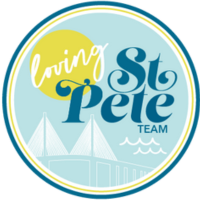The Historic Old Northeast!
This beautiful neighborhood is full of tree lined streets and sits adjacent to the north end of downtown St. Petersburg. So many reason the Old NE is popular from a real estate perspective.
Many know the Old NE for Halloween displays, however, there’s SO MUCH more to this neighborhood!
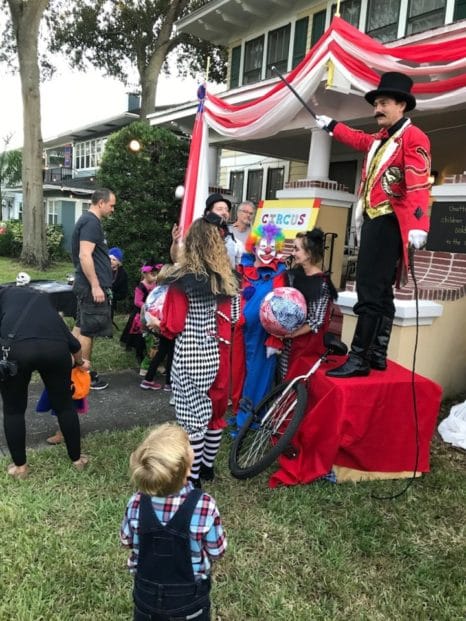
Per the Historic Old Northeast Neighborhood Association (HONNA), the Old Northeast “is the FIRST established neighborhood in St Petersburg”. The Old Northeast was even listed on the National Register of Historic Places in 2003. You’ll quickly notice brick streets, hex block sidewalks, granite curbs, and a mature tree canopy of oaks, magnolias, palms, jacarandas and pines. So many reasons why Old NE real estate values here generally have held up well over the years.
There’s a neighborhood shopping area, waterfront green space, restaurants, and the Old Northeast is also home to many St Petersburg landmarks! From a real estate perspective, you’ll find a mixture of bungalows and Mediterranean styles, many with expansive front porches for gatherings. These older homes are graced with a history like none other.
The Old Northeast of course also holds North Shore Park, with swimming, tennis, wide sidewalks, nearby playground, even more green space, plus a beach! And then on the north side, you have Coffee Pot Bayou, a beautiful waterfront backdrop for biking, walking, reading, and manatee watching! The Old Northeast’s location is fantastic, as you’re within walking distance of the Vinoy Hotel and downtown waterfront. However, if you prefer to catch a ride, the St Pete public transit system offers bus service in the neighborhood!
As I mentioned earlier, per HONNA, the Historic Old Northeast is the first official neighborhood in St Pete. I can certainly see why it was established so early. The location is perfect, bordering the waterfront, Coffee Pot Bayou, parks, and of course now adjacent to Downtown St Pete. The neighborhood contains around 2500 households (3000+- historic buildings), with official boundaries as:
North: 30th Avenue N/NE
South: 5th Avenue N/NE
East: North Shore Blvd NE & Coffee Pot Blvd NE
West: 4th Street N
As I read about the Old Northeast, I discovered it was originally a village of farmers. An article called the Old NE the “soul” of St Pete, with downtown as the “heartbeat”. HONNA notes that the area originally consisted of “pine trees, palmettos, sand flats, salt marshes, and several streams, ponds, and artesian wells”. They also note there’s a natural downward elevation slope from 4th street to the waterfront. The highest elevation is near 40 feet, around 9th Ave N and 4th St North. While there are nearby areas with even higher elevation, that’s high for these parts! Way back then, the shoreline north of 5th Ave had 4-5 foot tall sand bluffs, with a sandy beach below.
We all know the importance of elevation when purchasing a home in the Tampa Bay Area, or at least I hope your Realtor explains! Elevations can vary from street to street around here, and even home to home (ie year built). Some elevations are a bit low in Old Northeast, so make sure to check your perspective home’s elevation prior to purchasing. Even if the perspective real estate buyer’s dream home has a low elevation (as with many around Tampa Bay), many of course decide that the Old Northeast location is simply too great to pass up! Some homes are in X flood zone, which is certainly a plus.
Boaters: There are a small handful of properties with dockage across the street. Some of these properties have bridge clearance restrictions.
Flooding/Elevations: Be mindful of home elevations around the Old NE so you know what to expect with flood insurance. Some properties toward 4th street have reasonably high elevation, where-as some of the properties near the water have lower elevations.
Walkability: An easy walk to downtown from a number of the homes, plus plenty of nearby areas to ride bikes, exercise, jog.
Waterfront/Water Views: While homes in Old Northeast are not directly on the water, some of them have water views. Not simply water views, views of Coffee Pot Bayou and a few with open’ish water views toward Tampa Bay.
HOA: While the Old NE has HONNA, the membership and fees involved are simply donations, they’re voluntary. HONNA is a 501(c)(3) nonprofit organization.
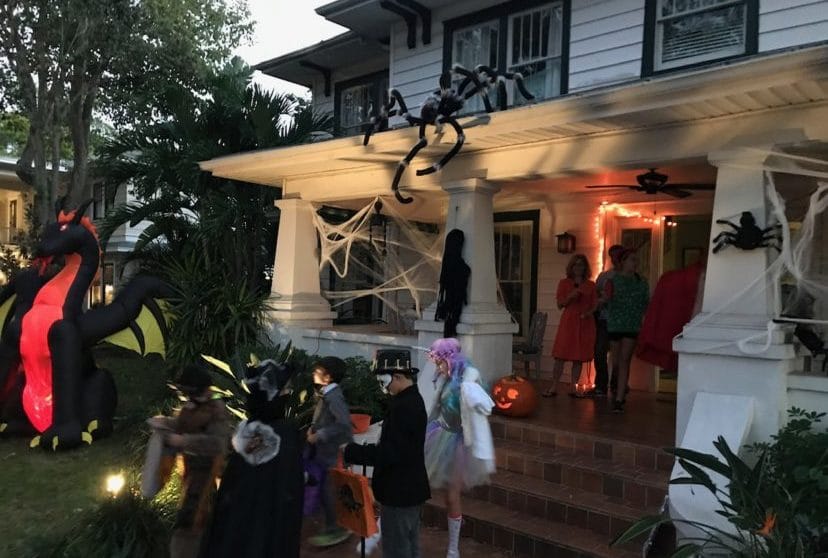


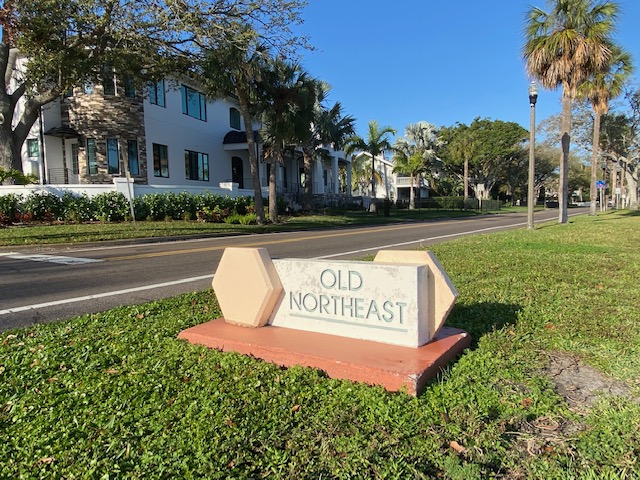
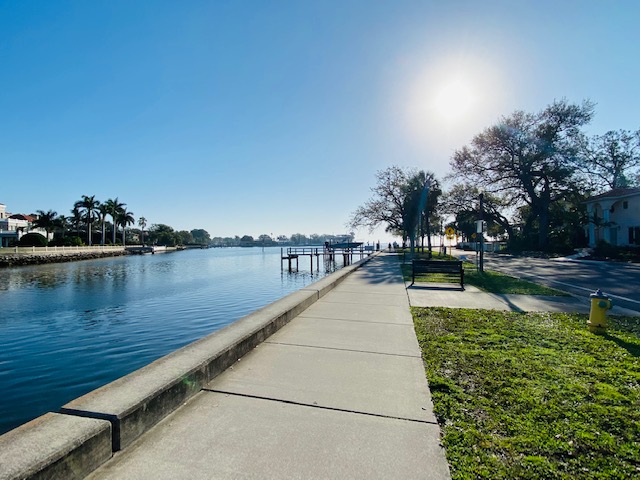
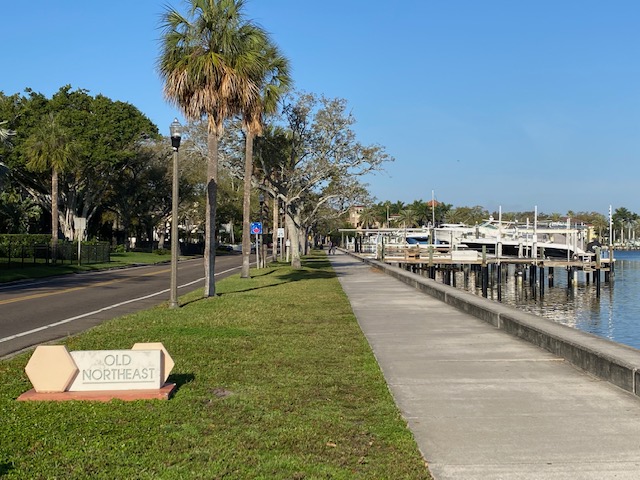

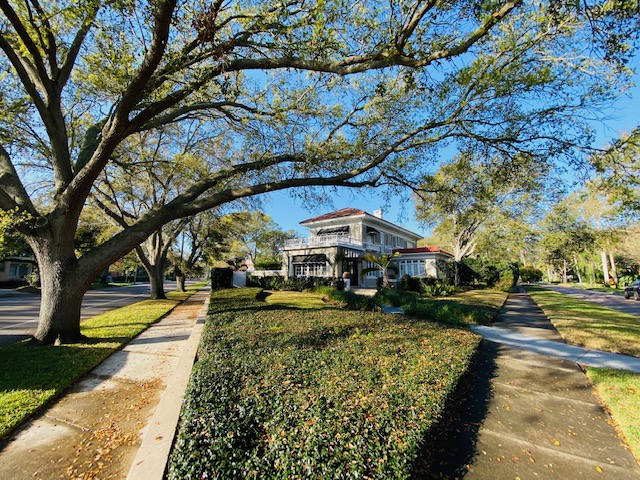
Alright, onto the late 1800’s when the area became home to many citrus groves and other small farms. THEN in 1905 the first residential development began, orchestrated by C. Perry Snell. He pulled together the Bayshore Land Company with A.C. Clewis, F.A. Wood, and A.E. Hoxie. They started with the area east of 1st Street from 5th Ave N to 12th Ave N. Since they were starting from scratch, the public services all needed to be installed (ie water and sewer), streets planned, and land leveled. Recall the sand bluffs above. Advertisements back in the day evidently called the Old Northeast the “premier residential address”. That still stands true today, as many influential people have lived in the Old Northeast over the years and live there today.
The Old Northeast started with two subdivisions. One was called Bayshore and ran from 5th to 8th Ave. The other was called Bayfront and ran from 9th Ave to 12th Ave. Then C. Perry Snell added a developer by the name of J.C. Hamlett to the mix. Together, they purchased 600 acres in the area. Specifically, from 13th Ave to Coffee Pot Bayou. This was an even bigger task to tackle, as these 600 acres included creeks and ponds. It’s not cheap to develop land that includes these type of water features, however I imagine the location was too great to resist!
At this point the developers added seawalls, sidewalks, a park and trolley lines. They called this area “North Shore”. Anyone been to North Shore Park? A great area that our family visits frequently.
In 1925, Snell began work on “Granada Terrace”, requiring all homes be stucco and in Italian or Spanish style and only allowing certain color paint. While the Great Depression eventually slowed growth, most lots in the area were occupied by the 1950’s per the article. In 1974, HONNA was formed to help preserve and lead the historic neighborhood in a positive direction.
Onto the 1980’s, when the neighborhood began a renaissance, thanks to tax laws that supported home rehabilitation! This was aided by the pivotal decision to renovate the historic Vinoy Hotel. Instead of being demolished, the Vinoy went through a complete restoration and re-opened in 1992. The Vinoy project inspired many homeowners, leading to an uptick in interest of Old Northeast historic homes! That continues to this day.
In the intro, I mentioned that the Old Northeast was designated as a landmark in the National Register of Historic Places in 2003. Additionally, there are “districts” within the neighborhood that are designated as a “Local Historic District” by the City of St. Petersburg. This designation benefits these areas by providing protection from certain development. These districts are:
Grenada Terrace
200 block of 10th Ave NE
700 block of 18th Ave NE
“Welch’s Mediterranean Row” at 100 block of 19th Ave NE
The individual landmarks in the Old Northeast include (some are private, please respect the owner’s privacy):
The Vinoy Park Hotel, 501 5th Avenue NE – Opened in 1925 on New Year’s Eve. Back in the day this was of course one of the tallest buildings in St Pete for years. It closed in the 1970s as it was run down. The decision was made years later to restore it, when it re-opened in 1992! My wife and I were actually members of the Vinoy for a number of years. We know it and love it!
For the other Old Northeast historical landmarks, I’m using the write-ups directly from the neighborhood association, as they know these buildings better than anyone:
“The Jones-Laughner Residence, 556 Beach Drive NE – Built ca. 1909 by Dr. Louis Jones, City Physician and Health Officer, this home is an excellent example of Craftsman style architecture using rusticated concrete block construction. Virginia Burnside, a leader among St. Petersburg’s women who resided in the house during WWI, made significant contributions to the war effort. In the 1920s, the founder of the Vinoy Park Hotel, Aymer Vinoy Laughner, purchased the home for the use of hotel personnel. His son, Paul, and daughter-in-law eventually made it their home.
The Ridgely Residence, 600 Beach Drive NE – Dentist Roy Ridgely, builder of this home, was an “ardent booster of the Sunshine City”. He established the Eureka Stone and Paving Company, a pioneer in the concrete business in St. Petersburg. His Craftsman style home is an excellent example of the rusticated concrete block manufactured by his company.
The Robert West House (Pineapple House), 101 6th Avenue NE – This is the 1912 home of Robert West who designed the first concrete bridge and first concrete sea wall in St. Petersburg. His design talents were also applied to the first City-owned gas plant, and plans for building and financing the city’s road system.
The Boyce Guest House, 635 Bay Street NE – Built in the mid to late teens, this vernacular style residence provided tourists with comfortable accommodations for twenty years following World War II. Almost thirty years later, the daughter of the earlier hosts and her husband, purchased the home and established the Sunset Bay Inn.
The Thomas Whitted House, 656 1st Street N – Thomas Whitted, the builder of this 1911 vernacular style house, owned the largest lumber supply business in St. Petersburg. He and his wife, Julia, raised eleven children, one of whom was Albert who became an aviator and operated the first commercial charter air flights out of St. Petersburg’s airport (later named after him).
The Monticello Apartments, 730 3rd Street N – This c. 1909 Neoclassical Revival home is another example of rare rusticated concrete block construction. In the 1920s it was converted to apartments catering to seasonal guests, and after WWII, became home to a group of artists. Later returned to single-family use, it was moved from 3rd Avenue North to its current location in 2005.
The Pace Residence, 705 16th Avenue NE – This 1932 home, designed by architect Elliott B. Hadley and built by Helen Pace Lawler and her husband, is an excellent example of the Mediterranean Revival style. One of the City’s earliest professional businesswomen, Mrs. Pace Lawler’s shop, Sherman’s, offered the latest in fashion to the women of St. Petersburg for over 50 years.
Sunken Gardens, 1825 4th Street N – Plumber George Turner began gardening as a hobby, but eventually gave up the business to devote himself full-time to developing Turner’s Sunken Gardens, one of Florida’s famed “roadside attractions”. Originally specializing in fruits and tropical plants, over the years he added birds and other small animals to the attraction.
First Church of Christ, Scientist, 253 5th Avenue N – Currently known as the Palladium Theater, the building is an excellent example of Italian Renaissance style architecture. Designed by Howard Cheney and constructed by the George A. Fuller Construction Company in 1926, the floor plan is typical of early 20th century First Church of Christ, Scientist designs. For almost seventy years, the congregation worshipped at this location. In the 1990s, it was repurposed as the Palladium Theater.”
Credit to the following sources:
HONNA Home | Historic Old Northeast Neighborhood Association
Historic Old Northeast St. Petersburg Neighborhood Information (stpetersburg.com)
The Historic Old Northeast!
This beautiful neighborhood is full of tree lined streets and sits adjacent to the north end of downtown St. Petersburg.
The Historic Old Northeast! Who’s familiar with the Old Northeast and/or visited this neighborhood for Halloween? They go all out with their displays. Like ‘Hollywood’ all out. Incredible. However, there’s SO MUCH more to this neighborhood than their Spielberg-esque decorations! Per the Historic Old Northeast Neighborhood Association, the Old Northeast “is the FIRST established neighborhood in St Petersburg”. The Old Northeast was even listed on the National Register of Historic Places in 2003. You’ll quickly notice brick streets, hex block sidewalks, granite curbs, and a mature tree canopy of oaks, magnolias, palms, jacarandas and pines. So many reasons why Old NE real estate has done well over the years!
There’s a neighborhood shopping area, waterfront green space, restaurants, and the Old Northeast is also home to many St Petersburg landmarks! From a home perspective, you’ll find a mixture of bungalows and Mediterranean styles, many with expansive front porches for gatherings. These older homes are graced with a history like none other.

The Old Northeast of course also holds North Shore Park, with swimming, tennis, wide sidewalks, nearby playground, even more green space, plus a beach! And then on the north side, you have Coffee Pot Bayou, a beautiful waterfront backdrop for biking, walking, reading, and manatee watching! The Old Northeast’s location is fantastic, as you’re within walking distance of the Vinoy Hotel and downtown waterfront. However, if you prefer to catch a ride, the St Pete public transit system offers bus service in the neighborhood!
As I mentioned earlier, per HONNA, the Historic Old Northeast is the first official neighborhood in St Pete. I can certainly see why it was established so early. The location is perfect, bordering the waterfront, Coffee Pot Bayou, parks, and of course now adjacent to Downtown St Pete. The neighborhood contains around 2500 households (3000+- historic buildings), with official boundaries as:
North: 30th Avenue N/NE
South: 5th Avenue N/NE
East: North Shore Blvd NE & Coffee Pot Blvd NE
West: 4th Street N
As I read about the Old Northeast, I discovered it was originally a village of farmers. An article called the Old NE the “soul” of St Pete, with downtown as the “heartbeat”. HONNA notes that the area originally consisted of “pine trees, palmettos, sand flats, salt marshes, and several streams, ponds, and artesian wells”. They also note there’s a natural downward elevation slope from 4th street to the waterfront. The highest elevation is near 40 feet, around 9th Ave N and 4th St North. While there are nearby areas with even higher elevation, that’s high for these parts! Way back then, the shoreline north of 5th Ave had 4-5 foot tall sand bluffs, with a sandy beach below.
We all know the importance of elevation when purchasing a home in the Tampa Bay Area, or at least I hope your Realtor explains! Elevations can vary from street to street around here, and even home to home (ie year built). Some elevations are a bit low in Old Northeast, so make sure to check your perspective home’s elevation prior to purchasing. Even if the perspective real estate buyer’s dream home has a low elevation (as with many around Tampa Bay), many of course decide that the Old Northeast location is simply too great to pass up! Some real estate in Old Northeast is in X flood zone, a big plus.
Boaters: There are a small handful of properties with dockage across the street. Some of these properties have bridge clearance restrictions.
Flooding/Elevations: Be mindful of home elevations around the Old NE so you know what to expect with flood insurance. Some properties toward 4th street have reasonably high elevation, where-as some of the properties near the water have lower elevations.
Walkability: An easy walk to downtown from a number of the homes, plus plenty of nearby areas to ride bikes, exercise, jog.
Waterfront/Water Views: While homes in Old Northeast are not directly on the water, some of them have water views. Not simply water views, views of Coffee Pot Bayou and a few with open’ish water views toward Tampa Bay.
HOA: While the Old NE has HONNA, the membership and fees involved are simply donations, they’re voluntary. HONNA is a 501(c)(3) nonprofit organization.







Alright, onto the late 1800’s when the area became home to many citrus groves and other small farms. THEN in 1905 the first residential development began, orchestrated by C. Perry Snell. He pulled together the Bayshore Land Company with A.C. Clewis, F.A. Wood, and A.E. Hoxie. They started with the area east of 1st Street from 5th Ave N to 12th Ave N. Since they were starting from scratch, the public services all needed to be installed (ie water and sewer), streets planned, and land leveled. Recall the sand bluffs above. Advertisements back in the day evidently called the Old Northeast the “premier residential address”. That still stands true today, as many influential people have lived in the Old Northeast over the years and live there today.
The Old Northeast started with two subdivisions. One was called Bayshore and ran from 5th to 8th Ave. The other was called Bayfront and ran from 9th Ave to 12th Ave. Then C. Perry Snell added a developer by the name of J.C. Hamlett to the mix. Together, they purchased 600 acres in the area. Specifically, from 13th Ave to Coffee Pot Bayou. This was an even bigger task to tackle, as these 600 acres included creeks and ponds. It’s not cheap to develop land that includes these type of water features, however I imagine the location was too great to resist!
At this point the developers added seawalls, sidewalks, a park and trolley lines. They called this area “North Shore”. Anyone been to North Shore Park? A great area that our family visits frequently.
In 1925, Snell began work on “Granada Terrace”, requiring all homes be stucco and in Italian or Spanish style and only allowing certain color paint. While the Great Depression eventually slowed growth, most lots in the area were occupied by the 1950’s per the article. In 1974, HONNA was formed to help preserve and lead the historic neighborhood in a positive direction.
Onto the 1980’s, when the neighborhood began a renaissance, thanks to tax laws that supported home rehabilitation! This was aided by the pivotal decision to renovate the historic Vinoy Hotel. Instead of being demolished, the Vinoy went through a complete restoration and re-opened in 1992. The Vinoy project inspired many homeowners, leading to an uptick in interest of Old Northeast historic homes! That continues to this day.
In the intro, I mentioned that the Old Northeast was designated as a landmark in the National Register of Historic Places in 2003. Additionally, there are “districts” within the neighborhood that are designated as a “Local Historic District” by the City of St. Petersburg. This designation benefits these areas by providing protection from certain development. These districts are:
Grenada Terrace
200 block of 10th Ave NE
700 block of 18th Ave NE
“Welch’s Mediterranean Row” at 100 block of 19th Ave NE
The individual landmarks in the Old Northeast include (some are private, please respect the owner’s privacy):
The Vinoy Park Hotel, 501 5th Avenue NE – Opened in 1925 on New Year’s Eve. Back in the day this was of course one of the tallest buildings in St Pete for years. It closed in the 1970s as it was run down. The decision was made years later to restore it, when it re-opened in 1992! My wife and I were actually members of the Vinoy for a number of years. We know it and love it!
For the other Old Northeast historical landmarks, I’m using the write-ups directly from the neighborhood association, as they know these buildings better than anyone:
“The Jones-Laughner Residence, 556 Beach Drive NE – Built ca. 1909 by Dr. Louis Jones, City Physician and Health Officer, this home is an excellent example of Craftsman style architecture using rusticated concrete block construction. Virginia Burnside, a leader among St. Petersburg’s women who resided in the house during WWI, made significant contributions to the war effort. In the 1920s, the founder of the Vinoy Park Hotel, Aymer Vinoy Laughner, purchased the home for the use of hotel personnel. His son, Paul, and daughter-in-law eventually made it their home.
The Ridgely Residence, 600 Beach Drive NE – Dentist Roy Ridgely, builder of this home, was an “ardent booster of the Sunshine City”. He established the Eureka Stone and Paving Company, a pioneer in the concrete business in St. Petersburg. His Craftsman style home is an excellent example of the rusticated concrete block manufactured by his company.
The Robert West House (Pineapple House), 101 6th Avenue NE – This is the 1912 home of Robert West who designed the first concrete bridge and first concrete sea wall in St. Petersburg. His design talents were also applied to the first City-owned gas plant, and plans for building and financing the city’s road system.
The Boyce Guest House, 635 Bay Street NE – Built in the mid to late teens, this vernacular style residence provided tourists with comfortable accommodations for twenty years following World War II. Almost thirty years later, the daughter of the earlier hosts and her husband, purchased the home and established the Sunset Bay Inn.
The Thomas Whitted House, 656 1st Street N – Thomas Whitted, the builder of this 1911 vernacular style house, owned the largest lumber supply business in St. Petersburg. He and his wife, Julia, raised eleven children, one of whom was Albert who became an aviator and operated the first commercial charter air flights out of St. Petersburg’s airport (later named after him).
The Monticello Apartments, 730 3rd Street N – This c. 1909 Neoclassical Revival home is another example of rare rusticated concrete block construction. In the 1920s it was converted to apartments catering to seasonal guests, and after WWII, became home to a group of artists. Later returned to single-family use, it was moved from 3rd Avenue North to its current location in 2005.
The Pace Residence, 705 16th Avenue NE – This 1932 home, designed by architect Elliott B. Hadley and built by Helen Pace Lawler and her husband, is an excellent example of the Mediterranean Revival style. One of the City’s earliest professional businesswomen, Mrs. Pace Lawler’s shop, Sherman’s, offered the latest in fashion to the women of St. Petersburg for over 50 years.
Sunken Gardens, 1825 4th Street N – Plumber George Turner began gardening as a hobby, but eventually gave up the business to devote himself full-time to developing Turner’s Sunken Gardens, one of Florida’s famed “roadside attractions”. Originally specializing in fruits and tropical plants, over the years he added birds and other small animals to the attraction.
First Church of Christ, Scientist, 253 5th Avenue N – Currently known as the Palladium Theater, the building is an excellent example of Italian Renaissance style architecture. Designed by Howard Cheney and constructed by the George A. Fuller Construction Company in 1926, the floor plan is typical of early 20th century First Church of Christ, Scientist designs. For almost seventy years, the congregation worshipped at this location. In the 1990s, it was repurposed as the Palladium Theater.”
Credit to the following sources:
HONNA Home | Historic Old Northeast Neighborhood Association
Historic Old Northeast St. Petersburg Neighborhood Information (stpetersburg.com)
Around Town
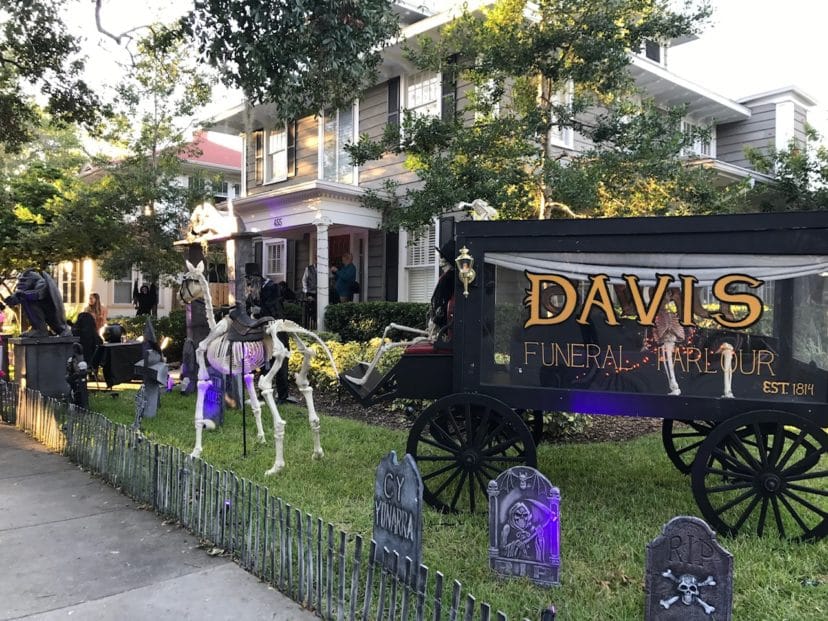
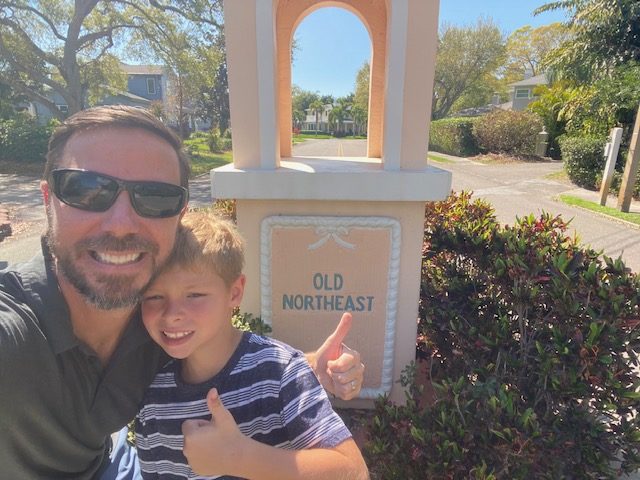

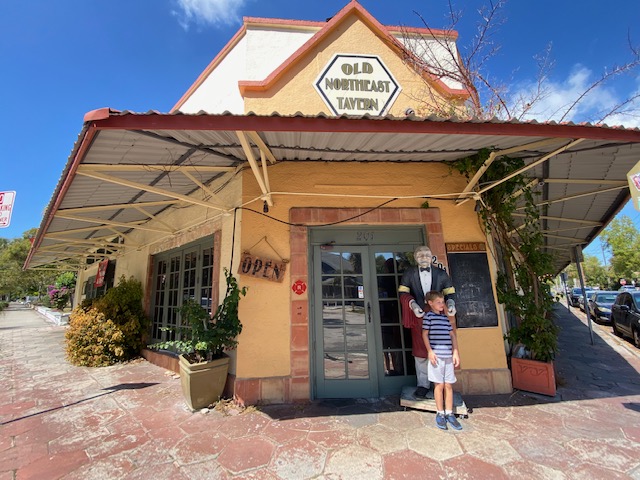
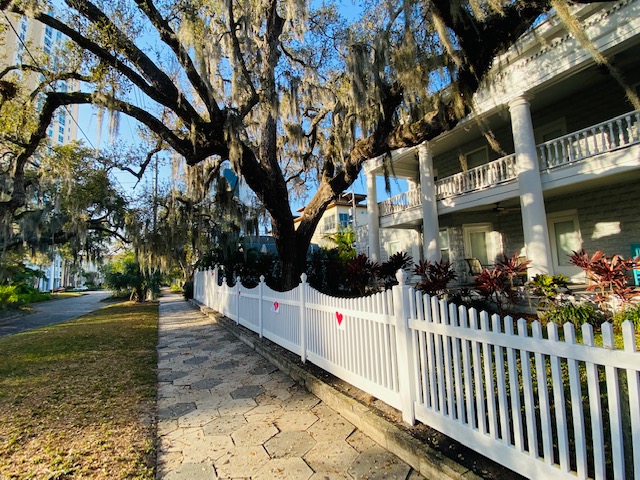





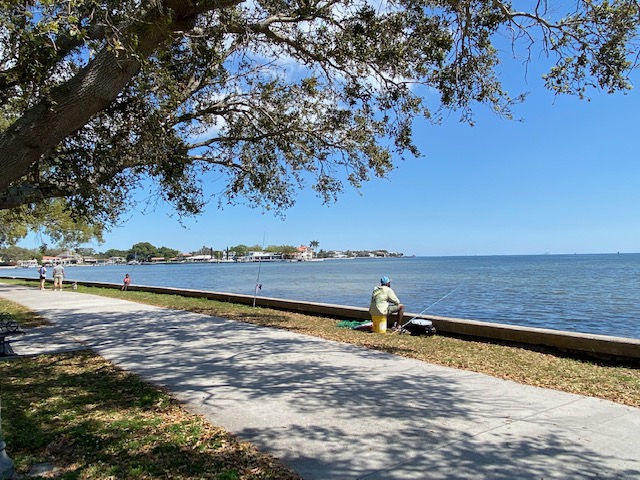




Old Northeast Real Estate
Map of Old Northeast
Join My Network
